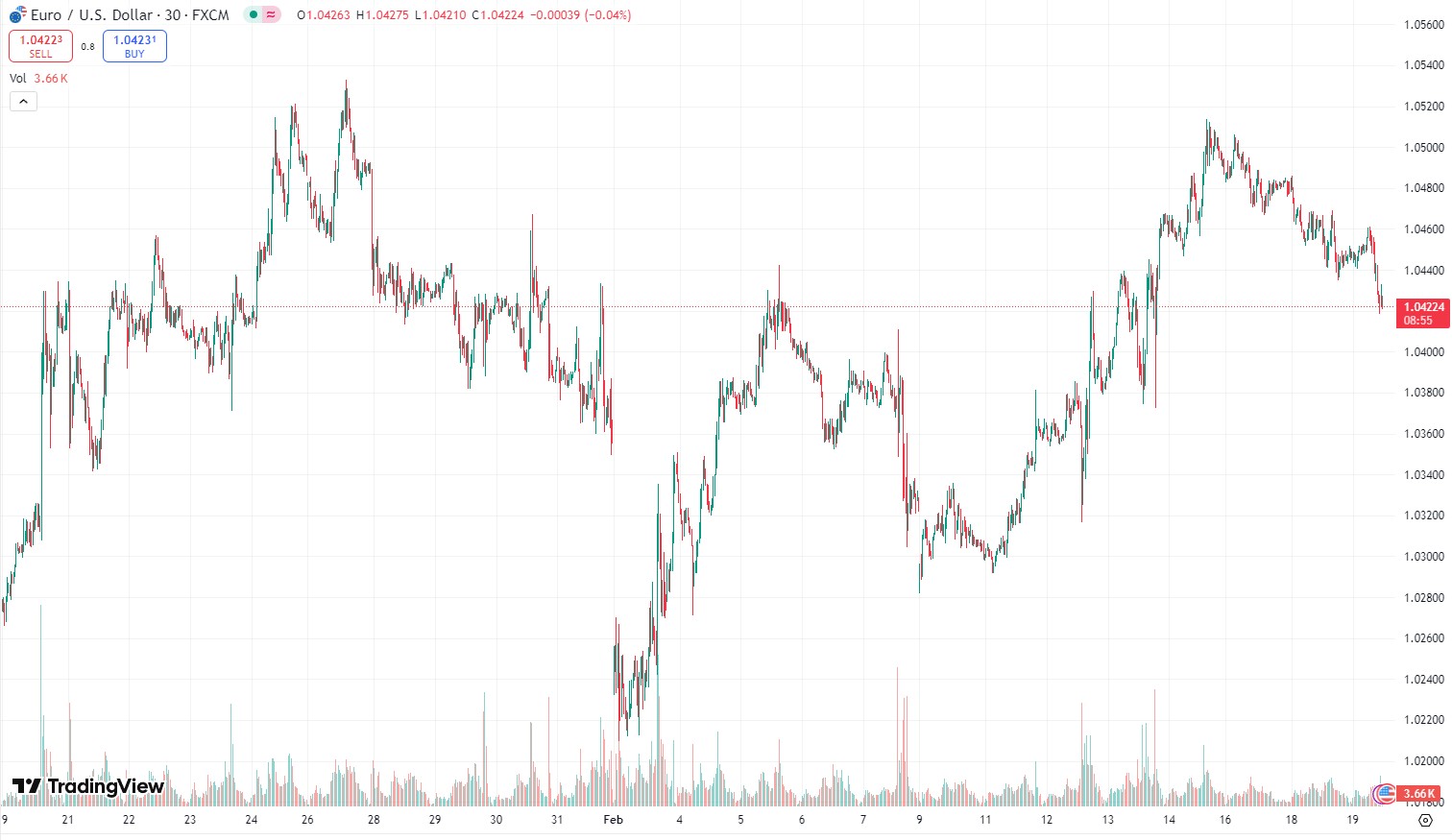UK Inflation Surges, but Pound Holds Steady Above $1.26

Fresh data this morning showed UK inflation rising faster than expected in January, but despite the jump, the pound remains resilient above $1.26 against the US dollar. GBP/EUR, however, has slipped from a near one-month high of €1.21, as Bank of England (BoE) Governor Andrew Bailey downplayed the risk of renewed price pressures in comments yesterday.
The headline Consumer Price Index (CPI) climbed to 3% in January from 2.5% in December, surpassing the 2.8% forecast and reaching its highest level in ten months. The increase was driven by rising food prices, airfare costs, and the introduction of value-added tax on private school fees. Core CPI also jumped to 3.8% from 3.2%, while services inflation—a key metric for the BoE—rose to 5%, slightly below economist expectations and the BoE’s own 5.2% projection. The pound remains directionless as a result, though short-term gilt yields have pushed higher. Meanwhile, market pricing still suggests just two BoE rate cuts this year.
The BoE anticipates inflation will reach 3.7% by Q3 due to rising energy costs, while private sector wage growth has also surged to 6.2% in the three months to December. This could warrant a cautious approach to rate cuts. However, with domestic economic weakness and signs of a cooling labour market, the current pricing of just two cuts may prove too conservative—we see room for three before year-end.
Euro Slips as US Yields Rise Despite German Confidence Boost

The euro declined for a second consecutive day, retreating from last week’s near three-month high against the US dollar. Despite a sharp rise in German investor confidence, EUR/USD slid back toward the lower $1.04 range, weighed down by stronger US Treasury yields that bolstered the dollar.
Germany’s ZEW Economic Sentiment Index surged to 26 in February, its highest level since July 2024 and well above expectations of 20. The 15.7-point jump—the largest since early 2023—was fuelled by hopes that the upcoming German election would pass without major disruptions and that private consumption would rebound in the coming months. On the geopolitical front, President Donald Trump’s decision to postpone tariffs provided a lift to Germany’s benchmark equity index, which hit record highs. Meanwhile, optimism surrounding a potential US-brokered peace deal in Ukraine has supported market sentiment, though Trump’s concessions have raised concerns among European and Ukrainian officials.
In the bond market, European yields continued to climb as traders weighed the implications of increased defence spending and higher bond issuance across the Eurozone. However, details on fiscal plans are expected only after Germany’s election this weekend. While rate differentials currently favour the dollar, the euro’s downside may be limited if confidence grows that fiscal stimulus could support economic growth and reduce the need for aggressive rate cuts from the European Central Bank. Moreover, EUR/USD appears undervalued relative to inflation-adjusted interest rate spreads, suggesting potential support in the near term.
Dollar Strengthens as Treasury Yields Climb and Fed Stays Cautious
The US dollar index rebounded above 107 on Tuesday, snapping a three-day losing streak as the 10-year US Treasury yield pushed past 4.5%. This shift came after Federal Reserve officials signalled a cautious stance, suggesting they are in no hurry to cut interest rates while inflation remains a concern. Investors are now focused on the release of last month’s Fed meeting minutes for further clarity on monetary policy.
Economic data releases were sparse this week ahead of Friday’s flash PMI reports, but Tuesday brought an unexpected boost. The New York Empire State Manufacturing Index surged by 18.3 points in February, reflecting strength in the sector. However, inflationary pressures remained evident, with input costs accelerating at their fastest pace in nearly two years and selling prices also on the rise. These developments led to a slight reduction in market expectations for Fed rate cuts, pushing Treasury yields higher and lifting the dollar against all major currencies.
On the geopolitical front, US and Russian officials held their first high-level discussions on the Ukraine war since its early days, notably without Ukraine’s participation. European leaders remain side-lined as broader security implications unfold. With no breakthrough in sight and uncertainty surrounding a potential Putin-Trump summit, market sentiment has turned cautious, further reinforcing support for the dollar.






